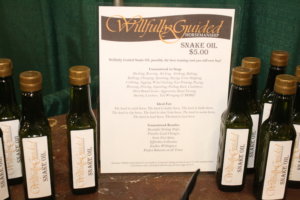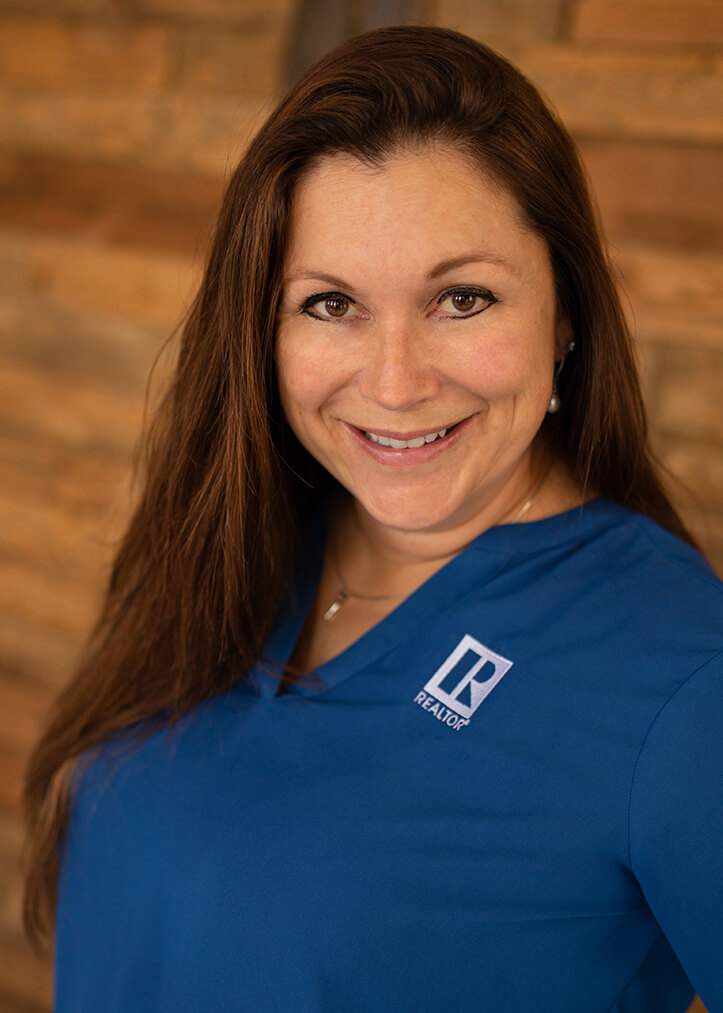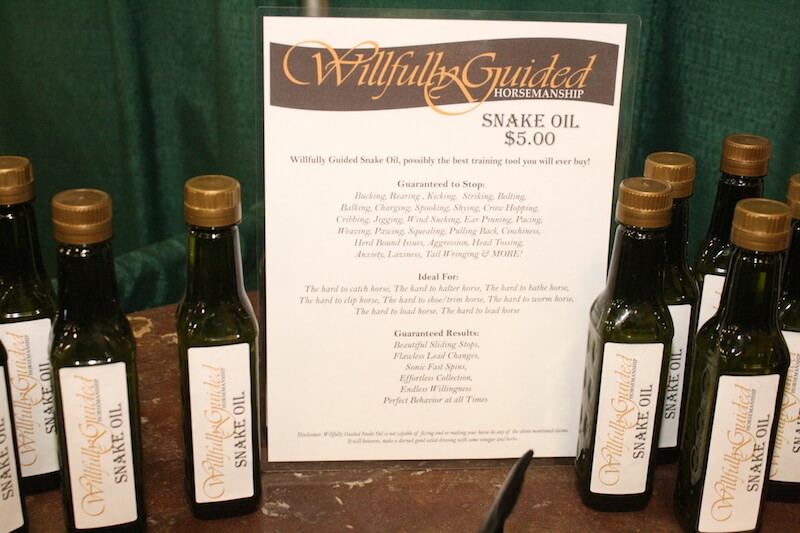Good Horsemanship is Developed, Not Sold
by Allison Trimble
I had a funny thought while preparing for my first expo—what am I selling? As a clinician, the methods and philosophy are most important, but the merchandising is where you are sustained. This is a business like any other and it’s a hard way to make a living. Each clinician develops a line of product they market to their following and, as I planned ahead, I realized I had none!

I have no particular angle or tool that I use more than others and it got me thinking about the traveling snake oil salesmen from the Wild West: “Step right up ladies and gentleman, and experience the wonder of this fix-all, cure – all snake oil.” As a joke, I bottled olive oil and offered it as Willfully Guided Snake Oil, a cure-all for a plethora of equine vices and training problems. It was intended to be used as a conversation starter about my philosophy, but I was shocked, and a bit mortified, at the number of people who required an explanation that it was only a farce. Fortunately, most understood the gag and it opened the door for worthwhile dialog.
There is no magic halter that will teach your horse to tie or lead; there is no bit weighted so perfectly that it masks the roughness and inconsistency in your hands. The person’s name on the equipment you are buying does not enable you to channel their years of experience and knowledge. I don’t mean to sound negative; it simply gave me an opportunity to think more clearly about my own system because in performance horse training there is some of this same “snake oil” thought process.
I take particular issue with the use of training devices such as draw reins, quick stops, tack collars, and all manner of mechanized equipment concocted over the years to “fix” training holes. They can be effective, to some degree, because they work on a fresh pressure point that has not yet been dulled in the horse and is similar to the concept of getting a bigger bit. The problem with training devices is that you have to be handy to use them properly. The majority of the people reaching for them are individuals who have created the problems in their horse as a result of their own shortcomings, not the horse’s. The problem may be masked, but it will show itself again when the same methods produce dullness on that once fresh pressure point. The effectiveness of any tool is relational to the hands that hold it. I tell my clients that, as a rule, you should be able to perform all maneuvers in a smooth snaffle.
Early in my career, shadowed by my lack of knowledge and with futurities looming in the near future, I used a number of these tools. What I found was that they were a quick fix that left me overly confident. That confidence was quickly erased when I walked into the show pen and my horse’s holes were exposed. The reason you are having problems with whatever maneuver you are working on is much more fundamental than the particular maneuver. That is why patching the maneuver—such as getting your horse into frame with draw reins—won’t work for long, or will show itself in other equally important areas. Instead, address the crack in the foundation of your horse’s training.
In the process of training and pushing your horse forward even the best trainers can muddy the waters. For example, in teaching a horse to change leads, I often use draw reins in the initial stages. I do this because I need to isolate the pressure and release needed in the horse’s hip and shoulders to teach them to change properly. A horse can get “leapy” during this process and I am simply closing off more doors to help show them the correct response. I use draw reins for this purpose alone because it is consistent with my training methods based on pressure and release.
You cannot replace a solid training system based on a clear philosophy of pressure and release. Timing, understanding and ability only come from hours in the saddle, exposure to talented horseman, and learning from the endless mistakes you will make. If training performance horses were easy, everyone would be good at it. It is both a sport and an art.
Published May 2012 Issue

Allison Trimble is a Realtor® specializing in equestrian properties, farm and ranch properties, and residential real estate. She’s a former horse trainer, and a current owner, breeder, and non-pro competitor in cow horse and reining events. For many years, Allison wrote a monthly column for The Northwest Horse Source.
Learn more at www.allisonblakerealestate.com






